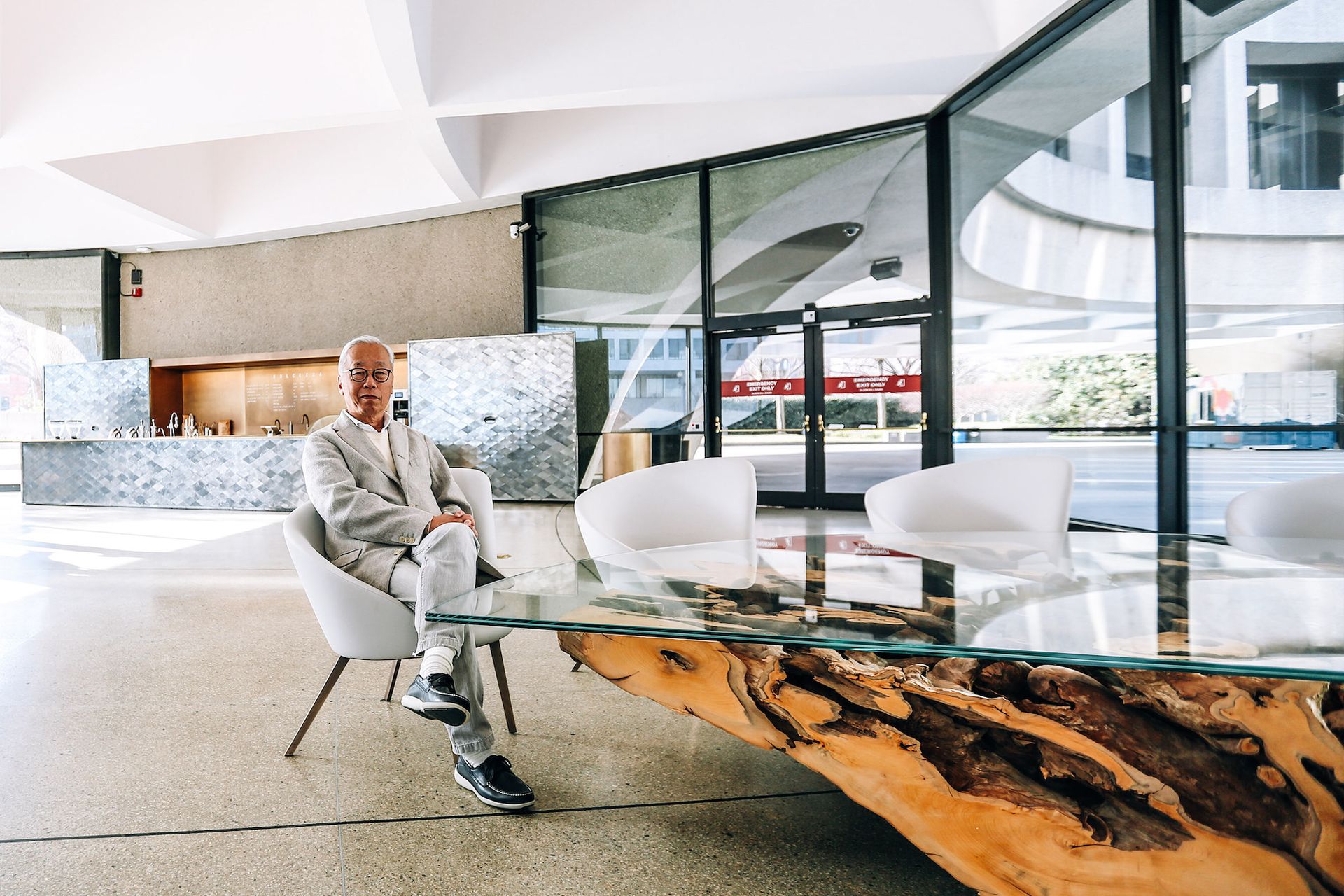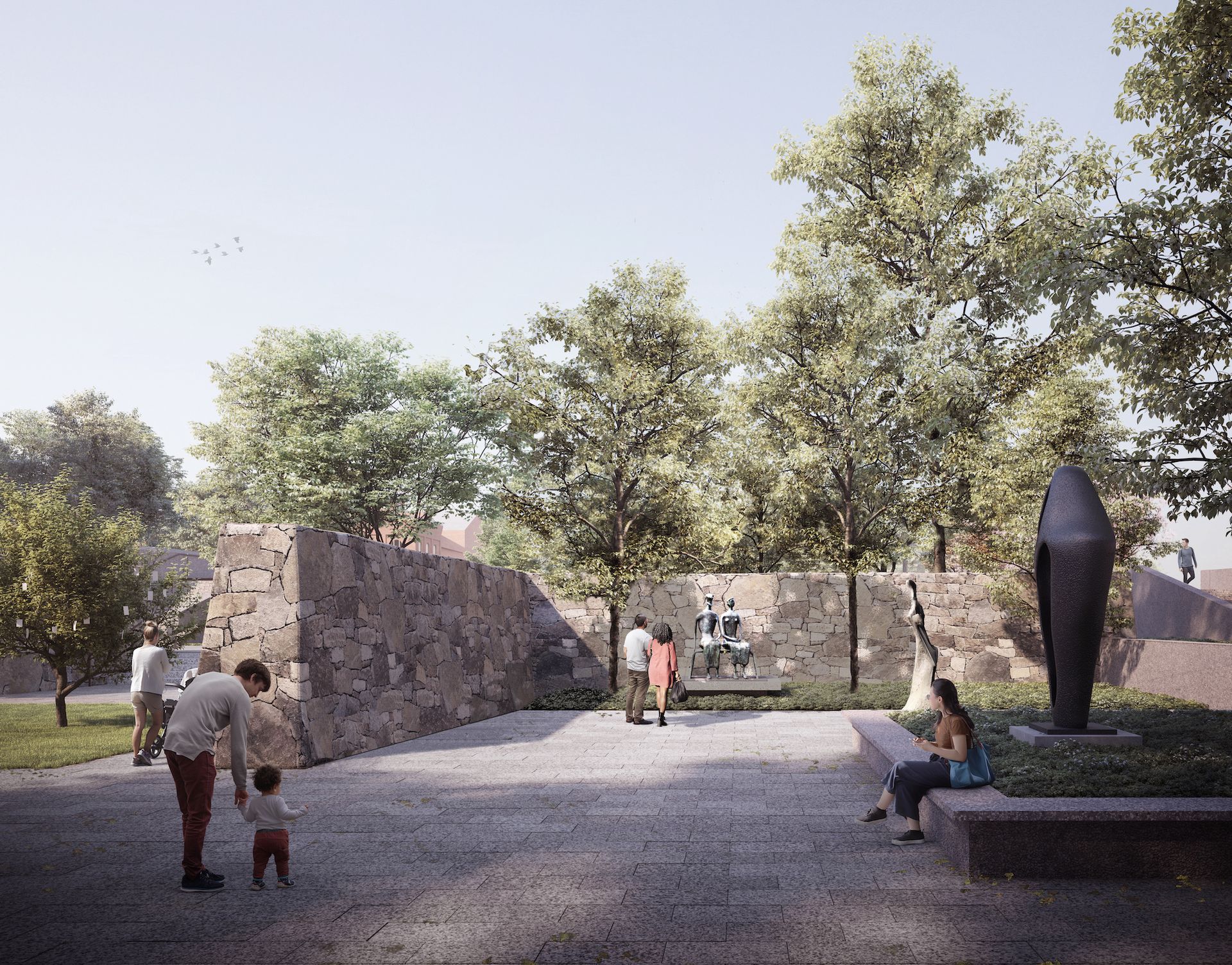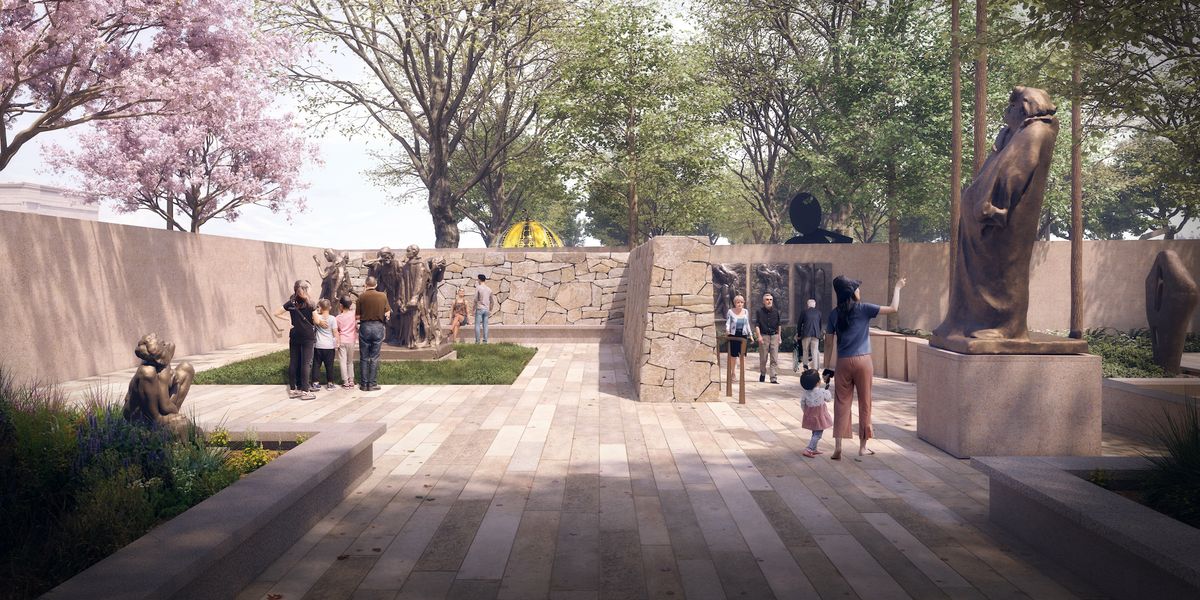After a two-year debate that pitted preservationists against the Hirshhorn Museum in Washington, DC, the federal National Capital Planning Commission (NCPC) approved a controversial redesign of the art institution’s Modernist sculpture garden today. The vote was 6-0, with one abstention.
The commission’s decision appears to be the last hurdle in federal approvals for the $60m renovation, with construction expected to begin in the fall of 2022 and to last for three years. The Commission of Fine Arts voted 5-2 in July to approve the project, which potentially could be completed in time for the Hirshhorn’s 50th-anniversary celebrations in 2024-25.
Critics of the redesign, which the museum says is intended to bolster the 1.5-acre garden’s visibility along the National Mall and enhance the comfort of visitors, had accused planners of violating the Brutalist 1974 aesthetic of Gordon Bunshaft, who designed the museum and garden. They also expressed concern that it would mar the vision of Lester Collins, the landscape architect who added trees and vegetation as a counter to the unremitting sun baking the garden’s walkways in 1981.
The museum enlisted the renowned Japanese artist and architect Hiroshi Sugimoto in 2019 to execute the redesign. His plan calls for opening and modernising an underground tunnel below Jefferson Drive that connects the garden with the museum’s plaza, a change that has generally drawn applause. The redesign also added new entrances, a flexible central space for performance art and temporary exhibitions, and a series of interconnected outdoor “galleries” with stacked stone walls for the museum’s sculptures.

Artist and architect Hiroshi Sugimoto in the lobby of the Hirshhorn Museum Photo by Farrah Skeiky. Courtesy of the Hirshhorn Museum and Sculpture Garden
Of particular concern to Modern landscape enthusiasts and preservationists were Sugimoto’s plans for an extension to the garden’s original rectangular reflecting pool, whose shape critically echoed a window and balcony that Bunshaft designed for the museum’s concrete and granite cylindrical building. They also objected to the substitution of Japanese-inspired stacked stone for concrete in a deteriorating interior partition wall, saying that it would clash with Bunshaft’s smooth concrete surfaces. Last December, the NCPC instructed the Hirshhorn to either revise those elements or provide a rationale for them.
The museum and Sugimoto responded this summer with a counterproposal: the apron they had proposed to add to three sides of the garden’s signature reflecting pool would be eliminated, and a new pool of similar dimensions with an art and performance platform would be installed to the south. The inner partition wall, lowered to improve sight lines, would be reconstructed in concrete rather than stacked stone. They emphasized that the other stacked stone walls envisaged by Sugimoto for the garden would be compatible with the colour of the garden’s concrete perimeter wall.
A series of commissioners applauded the redesign at today’s meeting, suggesting that it addressed the key concerns of preservationists while advancing the overall goal of making the garden more hospitable to visitors and meeting the museum’s programming needs. “I really do appreciate the substantial modification,” said one of the commission’s members, Peter May. “I’m surprised by how much it has changed.” He acknowledged that some preservationists were unlikely to be satisfied: “I’m sympathetic to those questions, but it is a judgment call,” he said. He added that the solution struck “the right balance” between contemporary needs and historical concerns.
In a statement greeting the decision, Melissa Chiu, director of the Hirshhorn, praised a “robust public process that allowed us to hear and incorporate the views of so many who care deeply about the garden”.

A rendering of the redesigned east garden of the Hirshhorn Museum sculpture garden Courtesy Hirshhorn Museum and Sculpture Garden
But Charles A. Birnbaum, president and chief executive of the nonprofit Cultural Landscape Foundation, a leading critic of the stacked stone walls and the proposed change to the reflecting pool, suggested that Modernist preservation concerns had been given short shrift in the approval process. “The outcome today concerning the Hirshhorn Sculpture Garden redesign demonstrates that nationally significant works of landscape architecture, especially important Modernist designs in the nation’s capital, continue to be held to a different standard than building architecture by their stewards and regulatory agencies,” he said in a statement.
Birnbaum has particularly faulted the approving agencies for failing to assess the redesign’s impact on the visual and spatial characteristics of the garden.
Liz Waytkus, executive director of the nonprofit group Docomomo US, which champions the preservation of Modern architecture, also lamented the commission’s decision. “We want to celebrate changes like the reopened underground section,” she said of the redesign in an interview. But she expressed concerns about the addition of the second pool, saying that it could overwhelm the garden’s central area by diminishing the “negative spaces” that throw crucial design elements of the museum and garden into relief.
“You need negative space when you design so you can emphasise what you have designed, and when you just throw a lot of garbage in there, you get a lot of garbage,” she said.
The redesign now appears to be a “done deal”, however, she adds. “We will still be in this process,” Waytkus says. “There’s more time for discussion, but I don’t expect that there is anything more for us to do.”


